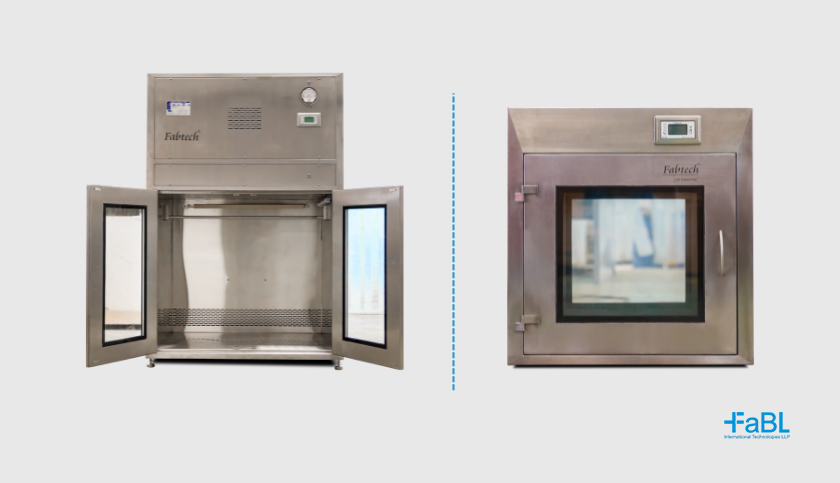Tablets and capsules continue to be the most commonly manufactured oral solid dosage form in the pharmaceutical industry. Before tabletting, pharmaceutical compounds undergo granulation to improve flowability and processing. 'Granulation is the process of collecting particles together by creating bonds between them. Bonds are formed by compaction or by using a binding agent.' With this post, we introduce you to the science of granulation, one of the most critical operations in the oral solid dosage form manufacturing process.
Tablet or capsule quality is achieved by the granulation process and not just by compressing granules in a tablet press or filling into capsule shells. Granulation combines one or more powders to bond and form granules that allow the tabletting process to produce tablets within the specified tablet-press speed range or in automatic capsule filling machines.
Agglomeration of particles with the granulation process improves flow and compression characteristics, reduces segregation, eliminates excess amounts of fine particles, and improves the uniformity of weight to achieve uniformity in drug content. This results in fewer tablet defects, improved yield, higher productivity and reduced downtime.
A tablet or capsule formulation is made up of several ingredients, and of these, the active ingredient (API) is critical. Other ingredients offer variations in physiochemical properties such as improved flow, high bulk density, compressibility, appearance, disintegration time and dissolution rate. It is necessary to understand the nature of the active and improve on its characteristics to make the granulation process work effectively. Flowability is critical to making a good tablet. Some active ingredients are very fine, small particles, lighter than other ingredients. Sometimes, even when the active ingredient is the correct size, it may not flow smoothly.
When the active ingredient is a small portion of the overall tablet, it is necessary that each tablet has the same quantity of active ingredient. If the active is incompatible from other ingredients because of particle size, density, flow characteristics, moisture content or compressibility, this can cause segregation during blending or transfer to the tablet press.
When a tablet contains a high percentage of the active ingredient, the active ingredient must flow, compress and eject from the tablet press and properly disintegrate when administered. The active ingredient must be granulated individually before being blended with other ingredients and compressed on the tablet press.
One way to solve the segregation problem is to granulate the active ingredient by itself and then blend it with the rest. The best method to ensure each tablet contains the correct amount of active ingredient especially if it constitutes a small portion of all the tablet ingredients is to mix the active ingredient thoroughly with the other ingredients and to then granulate the blend. This allows the bond between the particles in each granule to hold together and prevents them from breaking apart before they are compressed.
Powder Flow property
Tablet presses today can manufacture hundreds of thousands of tablets per minute. The speed of the press demands that there is good product flowability as the high speed, mechanical action requires a volume of fill to meet the actual tablet weight. The formulation, therefore, must be designed to flow consistently and fill volumetrically to achieve consistent tablet weights.
Compressibility
All powders have very different characteristics. When a tablet has different powders, each with varying physical characteristics, it can be difficult to compress. One of the main reasons to granulate powders is to make them more compressible. Excipients in a formulation enhance the ability of the powders to compact.
Density of granules
Granule strength and density can be controlled by controlling the quantities of the solution, binder, and mechanical action. Granulators - low shear, medium shear, or high shear - are used for this process. The amount of mechanical force of the granulator is referred to as shear - a low-shear granulator uses very little mechanical force to combine powders and binding solution. The main objective of a granulator is to produce the correct granule density, and one granulator will not work for all powders.
Excipients
All ingredients in tablets other than active ingredients are called excipients. They help powders become more fluid, which is critical when transferring them into the die cavity for compacting. In addition to enhancing the performance of the active ingredient, excipients also make them work better in the tablet press. Types of excipients used in tablet formulations include
- Binders that help fuse powders or link particles,
- Fillers to bulk up tablets,
- Lubricants to prevent powders from sticking to the tablet press components,
- Disintegrants to help the tablet break up once they are consumed, and
- Excipients to improve flow, compression, hardness, taste, and performance
In my next post, I will share the different techniques in granulation.
At Fabtech, we manufacture and supply single units or complete production lines for powder processing, oral solid dosage forms and tablet coating, from laboratory to production scale. Our experts are on hand to offer you advice on the different granulation processes and deliver the best solution for your specific granulation application. Please use the form below to get in touch.
This post originally appeared on the Fabtech blog.




